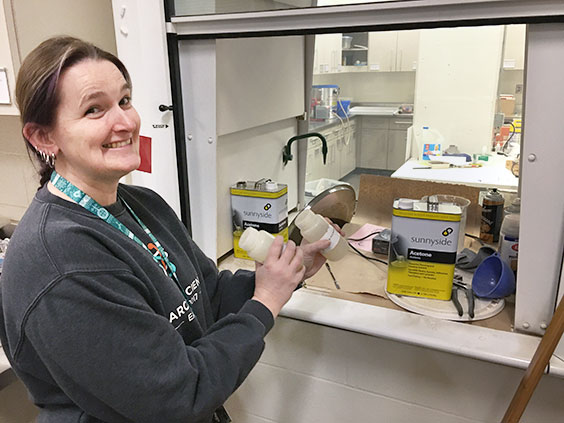If you ever catch me walking up and down the halls while shaking, twisting, turning, or just generally moving around an object in my hands — congratulations, you’ve met paleontology’s human gyroscope! Paleontology doesn’t own an actual gyroscope — a spinning device that can be rotated many different directions — so we resort to human hands instead. What would this be used for?
When making a casting, a gyroscope can be used to save material by making that casting hollow. Rather than filling up a mold with plastic (a waste of expensive materials), just the outer wall of the mold can be coated. This also gives us the added bonus of being able to measure out weights (steel pellets) to add to the plastic to achieve the weight of the original object. If weights are added, then it is extremely important to keep that gyroscopic motion going, or else you end up with a weeble-wobble object that’s heavy on one end (because all the weight sinks down while the plastic hardens).

Becky mixing glue. Mixing mixing mixing!
Here I am mixing up a batch of glue (butvar-76 plastic dissolved in acetone). You can see the fume hood (window) behind me to make sure all the potential chemical fumes go far, far away. Mixing up a thin version (consolidant) is easy — just pour into our magnetic mixer and away we go! Mixing glue, however, is tricky, and aerobic. You have to KEEP MOVING the bottles for a good hour, or else the not-quite-dissolved plastic sinks down to the bottom of the bottle and sits as an immoveable clump. Then, the next time someone tries to squeeze glue from the jug, they get a squirt of very liquid acetone — while all the glue stays in the bottle.
Some of our behind-the-scenes work is glamorous. Fossils! Prep work! Artwork! Other times, my work is just the necessary tasks that have to happen to make sure those glamorous projects keep going.

